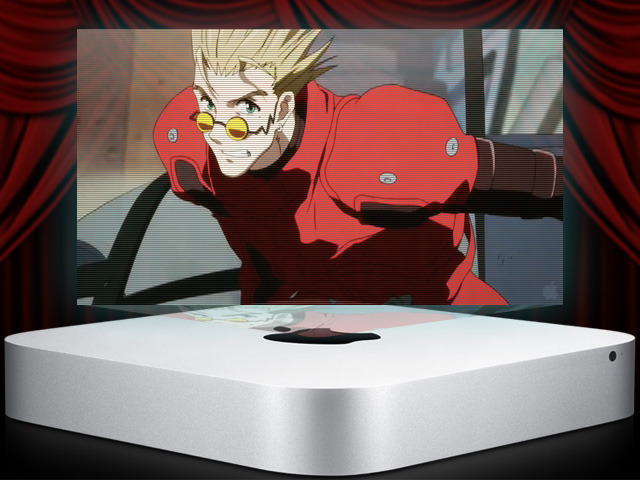
The Mac mini (lowercase, please) has served as the entry-level option in Apple's Mac lineup since its introduction in 2005. The system's modest energy footprint and impressively compact form factor have always been compelling, but mediocre hardware specs and lack of expandability have detracted from its value.
The new Mac mini, which was launched alongside the release of Mac OS X Lion in July, improves the formula and buries some of the unfortunate trade-offs that had to be made in previous models. In particular, the inclusion of a Sandy Bridge CPU (instead of the antiquated Core 2 Duo) significantly increases the mini's competitiveness.
In this review, we will measure the performance and energy footprint of a mid-range Mac mini configuration, then take a close look at its strengths and weaknesses as a Home Theater PC (HTPC).
Specifications
- CPU: 2.5GHz dual-core Intel Core i5
- Memory: 4GB 1333MHz DDR3 SDRAM
- Storage: 500GB SATA drive (5400 rpm)
- Graphics: AMD Radeon HD 6630M
Apple offers three separate configuration tiers for the Mac mini. The baseline model and the server model both have integrated Intel graphics instead of the Radeon, and the server model has a quad-core i7 instead of the dual-core i5. All three models can be configured with up to 8GB of RAM.
A 750GB hard drive spinning at 7200rpm is available as an upgrade option for all three models, but only the two higher-end models can be purchased with a solid-state drive. Of course, there will be external Thunderbolt-enabled options for users who want more storage expandability.
Hardware
The external design of the new Mac mini is largely the same as the previous generation. The dimensions are unchanged: 7.7" x 7.7" and 1.4" in depth. The aluminum unibody exterior and small size make the aptly named mini look exceptionally elegant. Weighing in at 2.8 pounds, it is light enough to carry comfortably with one hand. It is elevated by a black plastic pedestal that can be spun open to easily access the RAM slot. The power supply is built in, which means that you won't need a power brick or a big wall wart.




Ports and connectivity
The new Thunderbolt interconnect technology is spreading across the Mac product line as Apple rolls out hardware updates--and the Mac mini is no exception. The new model comes with a single Thunderbolt port, located on the back panel, alongside the USB ports.
A Thunderbolt port supports two bidirectional data channels that transmit data at speeds up to 10Gbps. Thunderbolt also supports daisy-chaining, allowing as many as six devices on a single port.
The mini's Thunderbolt port can be used today to plug in an external Thunderbolt display and high-speed external storage devices. The availability of Thunderbolt-enabled peripherals is currently limited, but the technology has the potential to fix some of the Mac mini's expandability limitations.
For more conventional external devices, the mini has four USB ports and one Firewire port. The back plate also has mini-audio jack for headphones, an SD card slot, an Ethernet port, an HDMI output, and a two-prong power connector. The mini supports WiFi (802.11 n/a/b/g) and Bluetooth 4.0.
There are a number of different options for plugging displays into the mini. The HDMI output makes it easy to connect the mini to most modern televisions. Apple includes an HDMI-to-DVI adapter in the box, so you can also plug in a regular monitor. The mini's Thunderbolt port does, of course, support Apple's new Thunderbolt-enabled 27-inch LED display. It is also backwards-compatible with mini DisplayPort monitors.
As usual, the mini doesn't come with a monitor or any input devices. You can add a Magic Trackpad and Apple Wireless Keyboard for $69 each when you order the system, or simply supply your own. The mini has an IR receiver on the front for the Apple Remote, which can be added for $19.
Because I'm using the mini as an HTPC, I ordered the remote but didn't bother adding other input devices. I'll discuss the input devices that I use with the system later when I talk about the mini's suitability as a set-top box.
reader comments
190